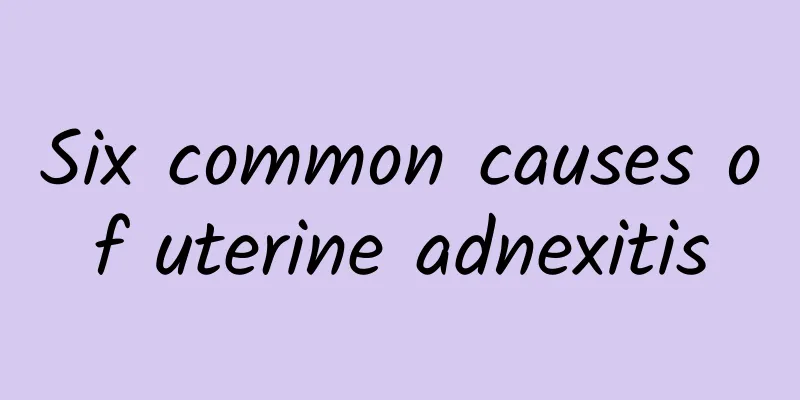What are the symptoms of functional uterine bleeding in women over 47 years old?

|
Dysfunctional uterine bleeding is common in women over 47 years old. The main symptoms include irregular menstrual cycles, abnormally increased or decreased menstrual flow, prolonged or shortened menstruation, etc. This condition may be related to factors such as hormone level fluctuations, endometrial lesions, and mental stress. Treatment depends on the specific cause and may involve medication, surgery, or lifestyle adjustments. 1. Menstrual cycle disorders Women over 47 enter perimenopause, their ovarian function gradually declines, and their estrogen and progesterone levels fluctuate greatly, leading to irregular menstrual cycles. Menstruation may be early, delayed, or intermittent. It is recommended to clarify the cause through gynecological examinations and hormone level tests, and use hormone drugs to regulate the cycle when necessary. 2. Abnormal increase or decrease in menstrual flow Dysfunctional uterine bleeding may cause a significant increase in menstrual flow, even leading to anemia, or a significant decrease in menstrual flow, or even amenorrhea. Increased menstrual flow may be related to endometrial thickening, uterine fibroids or polyps; decreased menstrual flow may be related to ovarian dysfunction. Treatment includes oral contraceptives to regulate hormones, hemostatic drugs to control bleeding, and surgical removal of the diseased tissue in severe cases. 3. Prolonged or shortened menstrual period Prolonged menstruation may last for more than 7 days, or even endlessly; shortened menstruation may be less than 3 days. These symptoms may be related to decreased endometrial repair ability or insufficient hormone secretion. It is recommended to exclude organic lesions through ultrasound examination, use progesterone drugs to promote endometrial shedding when necessary, or improve symptoms through Chinese medicine conditioning. 4. Other associated symptoms Some women may experience backache, abdominal pain, fatigue and other symptoms, which are related to excessive blood loss or hormone imbalance. It is recommended to increase iron-rich foods such as lean meat and spinach, supplement vitamin C to promote iron absorption, and do appropriate exercise to enhance physical fitness. Dysfunctional uterine bleeding is more common in women over 47 years old, and the symptoms are diverse and complex. It is recommended to seek medical attention in time, identify the cause through gynecological examination, ultrasound examination and hormone testing, and take targeted treatment. At the same time, maintaining good living habits and avoiding excessive fatigue and mental stress can help relieve symptoms. If the symptoms persist or worsen, further investigation is needed to determine whether there is an organic lesion to ensure health. |
<<: What causes cervicitis and how to treat it
>>: How to care for cervical hypertrophy
Recommend
Common questions about endometrial tuberculosis
Endometrial tuberculosis is a disease that is dif...
Symptoms of uterine fibroids can cause women to have severe lower abdominal pain.
As we all know, the symptoms of uterine fibroids ...
What are multiple uterine fibroids? What is the high-risk age for multiple uterine fibroids?
According to statistics, about 20% of women over ...
What are the dangers of irregular menstruation?
What are the dangers of irregular menstruation? I...
Does cervical hypertrophy affect life expectancy?
Whether cervical hypertrophy will directly affect...
Why should pelvic inflammatory disease be treated with anal medication? The effect is faster
For pelvic inflammatory disease, anal medication ...
To prevent cervical erosion, you need to pay attention to fertility-related
Due to the special nature of the uterus, the prev...
Chloramphenicol in meatballs may be related to low-yield breeding pigs
In response to the discovery of chloramphenicol r...
What medicine should I take for cervical precancerous lesions?
Cervical precancerous lesions are a common diseas...
Common symptoms of irregular menstruation
Menstruation is the time when women need the most...
Experts remind: Small uterine fibroids can be observed, no need to rush for surgery
Nowadays, more and more women suffer from gynecol...
The care of cervical hypertrophy should be checked for vaginal Trichomonas infection
Cervical hypertrophy is a very common disease in ...
What is adenomyosis and what causes it
Adenomyosis is the most common gynecological dise...
If a woman suffers from vulvar leukoplakia, she should first pay attention to treatment
After vulvar leukoplakia occurs, the female body ...
How to treat premature ovarian failure
Premature ovarian failure is a disease caused by ...









